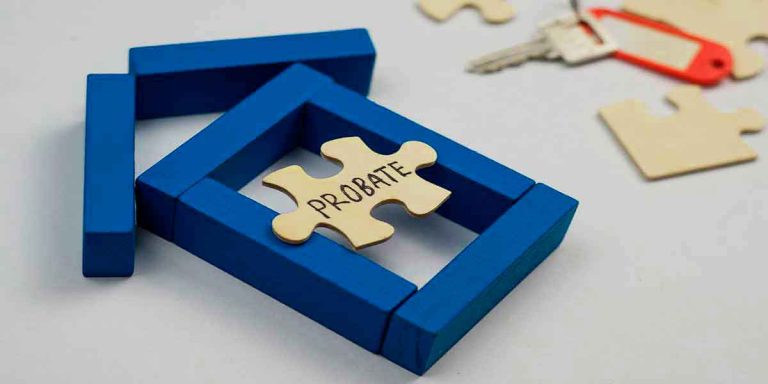A 2026 Guide to Pooled Trusts for Long Island Home Care
For more than 30 years, I have helped families across Long Island navigate the complexities of aging, illness, and long-term care. In all that time, I have never seen a crisis as acute as the one we face in 2026. The cost of home healthcare has skyrocketed, creating an unbearable financial burden for seniors and individuals with disabilities who simply want to age with dignity in their own homes. Many are caught in a devastating trap: their monthly income from Social Security and pensions is too high to qualify for Community Medicaid, yet nowhere near high enough to afford the thousands of dollars needed for home care each month.
This is the Long Island home care crisis. It is the story of the retired teacher in Nassau County and the former small business owner in Suffolk County who are forced to drain their life savings to get the help they need. But there is a powerful, legal solution designed specifically for this problem: the **Pooled Income Trust**. This is not a loophole; it is a lifeline established by law to help disabled and elderly New Yorkers access the care they are entitled to.
At Morgan Legal Group, our elder law practice is dedicated to helping Long Islanders navigate this very challenge. This guide will serve as your comprehensive roadmap for 2026, explaining what a Pooled Income Trust is, how it works, and how it can be the key to unlocking the Community Medicaid benefits you need to pay for your care at home. To learn if a Pooled Income Trust is the right solution for you, contact our firm for a consultation.
Part 1: Understanding the Medicaid “Income Gap” on Long Island
To understand the power of a Pooled Income Trust, you must first understand the problem it solves. Community Medicaid, which pays for home care, has very strict financial eligibility rules. For 2026, the challenge is the disconnect between the high cost of living on Long Island and the low income limits set by the Medicaid program.
The 2026 New York Medicaid Income Limit
In 2026, the Medicaid income limit for a single individual in New York is approximately **$1,732 per month** and **$2,351 for a couple**. (Note: These numbers are adjusted annually). This figure includes nearly all sources of income: Social Security, pensions, IRA distributions, and so on. If your monthly income is even one dollar over this limit, you are technically ineligible to receive Medicaid benefits.
A Cautionary Tale: The Spend-Down Trap
Consider Margaret, an 80-year-old widow living in Nassau County. Her total monthly income is $3,000 from Social Security and her late husband’s pension. She needs 20 hours of home care per week, which costs over $4,000 per month. Because her $3,000 income is over the $1,732 Medicaid limit, she is denied benefits. She is forced to pay the $4,000 bill from her savings. The “surplus” income of $1,268 ($3,000 – $1,732) that makes her ineligible is not nearly enough to cover the cost of her care. She is forced to “spend down” her life savings to cover the gap, rapidly depleting the nest egg she hoped to leave for her grandchildren.
This is the trap a Pooled Income Trust is designed to eliminate.
Part 2: What is a Pooled Income Trust? A Lifeline for Excess Income
A Pooled Income Trust is a special type of trust, authorized by federal and state law, that is managed by a non-profit organization. It allows individuals who are disabled (as defined by Social Security) and have “surplus income” above the Medicaid limit to legally shelter that income, thereby becoming financially eligible for Community Medicaid while still using their surplus income to pay for their living expenses.
How is this Legal? The Concept of a “(d)(4)(C)” Trust
This type of trust is specifically permitted under U.S. Code § 1396p(d)(4)(C). The law recognizes that it is poor public policy to force people to become completely impoverished to get the medical care they need. The trust acts as a legal “safe harbor” for income, allowing Medicaid to disregard it for eligibility purposes.
The “Pooling” Aspect
The reason it is called a “pooled” trust is that the non-profit organization pools the money from many individuals’ sub-accounts for investment and management purposes. However, the non-profit maintains a separate sub-account for each individual member of the trust. Your money is never mixed with anyone else’s for accounting purposes.
Who Can Use a Pooled Income Trust?
To be eligible to use a Pooled Income Trust in New York, you must meet two main criteria:
- You Must Be Disabled: This is a strict requirement. You must have a disability determination from the Social Security Administration or the New York State Department of Health. For most seniors over 65, age-related conditions can often meet this definition.
- You Must Have Surplus Income: Your monthly income must be over the current Medicaid income limit.
This tool is exclusively for solving the “income” problem for Community Medicaid. It does not solve the “asset” or “resource” problem. You must still meet Medicaid’s strict resource limits (approximately $31,175 for an individual in 2026). Our NYC elder law team can help with strategies, like a Medicaid Asset Protection Trust, to address the asset side of the equation.
Part 3: How It Works – A Step-by-Step Guide for 2026
The process of using a Pooled Income Trust can seem complex, but it follows a logical, step-by-step path. Working with an experienced elder law attorney is crucial to ensure each step is executed correctly and coordinated with your Medicaid application.
Step 1: Choose a Non-Profit Pooled Trust Organization
There are numerous non-profit organizations in New York that are approved to administer these trusts. It is important to choose a reputable, well-established organization. An attorney like Russel Morgan can help you select a trust that is known for its efficiency and good customer service.
Step 2: Complete the Joinder Agreement
The “Joinder Agreement” is the legal document that officially establishes your sub-account within the master pooled trust. It is a detailed contract that outlines your responsibilities and the rules of the trust. This document must be completed perfectly, as any errors can cause delays with your Medicaid application. It must be signed by you (or your agent under a Power of Attorney) and notarized.
Step 3: Deposit Your “Surplus” Income Each Month
Once your account is open, you must deposit your surplus income (also known as “spend-down”) into the trust each month. For example, using Margaret’s case from before, with a $3,000 income and a $1,732 Medicaid limit, her surplus is $1,268. She would deposit $1,268 into her pooled trust sub-account every month. This deposit legally removes the income from being counted by Medicaid, making her eligible for benefits that same month.
Step 4: The Trust Pays Your Bills
The money in your trust sub-account is still your money, but you cannot withdraw it as cash. Instead, the non-profit trustee uses the funds to pay for your personal living expenses. You submit bills and receipts to the trust, and they pay the third-party vendor directly. This allows you to use your own income to maintain your quality of life while Medicaid pays for your expensive home care.
Part 4: What Expenses Can the Trust Pay For?
A common question is, “What can I use the money for?” The general rule is that the trust can pay for almost any of the beneficiary’s personal needs and living expenses, as long as the payment is made directly to a third-party vendor and is for the sole benefit of the trust beneficiary. The trust *cannot* pay for medical services that Medicaid should be covering.
Commonly Approved Expenses:
- Housing Costs: Mortgage payments, rent, property taxes, homeowner’s insurance, and utilities (gas, electric, water).
- Food and Groceries: You can submit receipts for reimbursement or use a pre-paid debit card provided by some trusts for groceries.
- Personal Needs: Telephone, cable, and internet bills; clothing; personal care items; and transportation costs.
- Supplemental Care: Payments to a private home health aide for hours not covered by Medicaid.
- Taxes: The trust can pay your federal and state income taxes.
- Entertainment and Recreation: Magazine subscriptions, tickets to events, and other quality-of-life expenses.
What the Trust Cannot Do:
- Give You Cash: The trust cannot give you or a family member cash withdrawals.
- Pay for Food and Shelter for Others: All payments must be for the sole benefit of the beneficiary.
- Pay for Medical Care Covered by Medicaid: This includes doctor’s visits and prescription co-pays.
Part 5: Key Considerations for Pooled Income Trusts
While these trusts are powerful, there are important rules and considerations to be aware of before establishing one.
The “Payback” Provision
By law, any funds remaining in your individual sub-account upon your death must either be retained by the non-profit organization to further its charitable mission or be used to reimburse Medicaid for the cost of the services they provided. For this reason, the goal is not to accumulate money in the trust, but to use it each month to pay your bills. This is a key difference from other types of trusts used in estate planning.
Administrative Fees
The non-profit organizations charge a one-time enrollment fee and a small monthly fee to administer your account. These fees are a small price to pay for the thousands of dollars in Medicaid benefits you will receive.
The Importance of a Disability Determination
As mentioned, you must have a formal disability determination. If you are over 65 and not already receiving Social Security Disability, your attorney and doctor will need to work together to provide the necessary medical evidence to the state to prove your disability status. This is a critical step in the process.
Conclusion: A Vital Tool for Aging in Place on Long Island
The financial pressure on seniors and disabled individuals on Long Island is immense. The home care crisis is real, and the Medicaid income rules can feel insurmountable. A Pooled Income Trust is the legal and ethical solution that bridges this gap. It allows you to use your own hard-earned income to live comfortably in your home while leveraging the Medicaid program to cover the crushing costs of your home healthcare.
Navigating the establishment of a Pooled Income Trust and the corresponding Medicaid application is a complex legal process. Mistakes can lead to costly delays or even a denial of benefits. The experienced elder law attorneys at Morgan Legal Group have helped hundreds of Long Island families use this vital tool to secure the care they need. Do not let the “income gap” force you from your home or drain your savings. Schedule a consultation today to determine if a Pooled Income Trust is the right solution for you.
For more official information on trusts for individuals with disabilities, you can visit the resources provided by the Social Security Administration.







